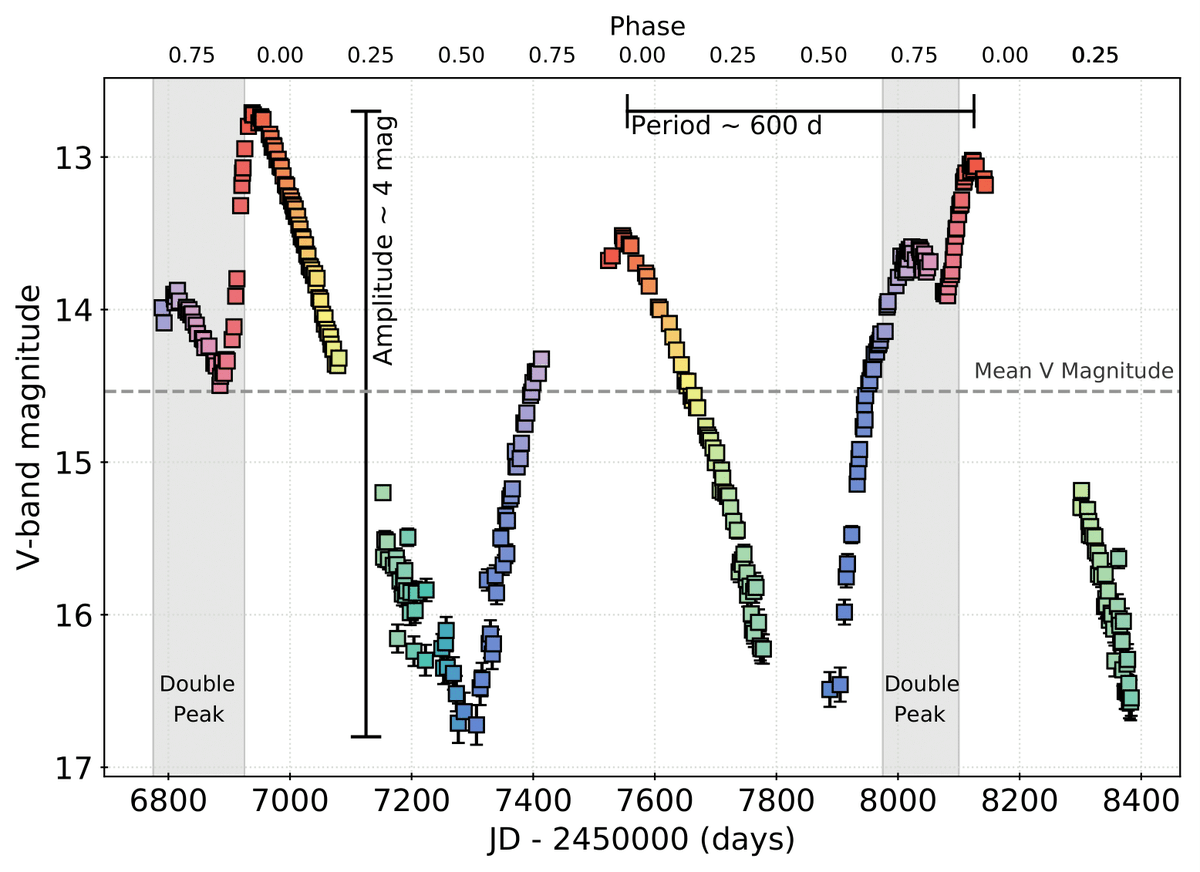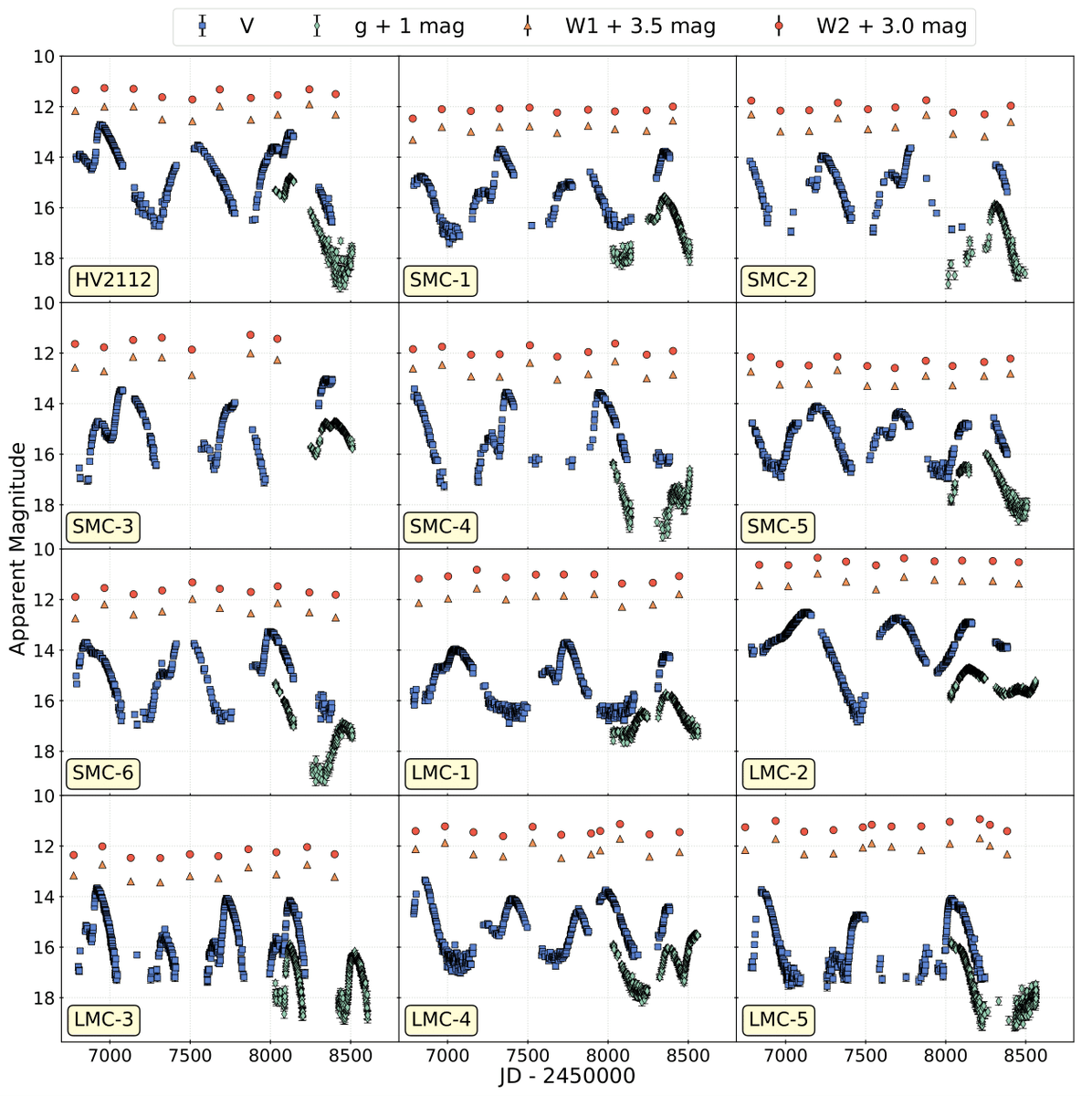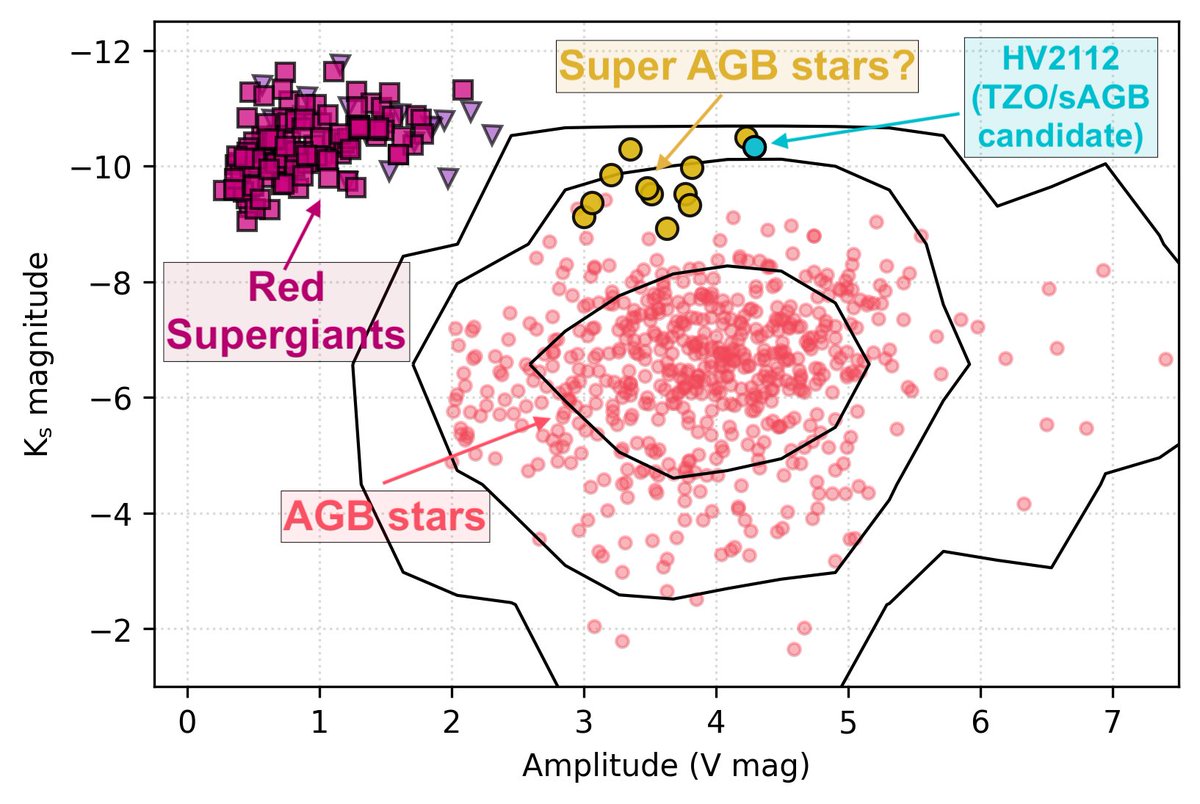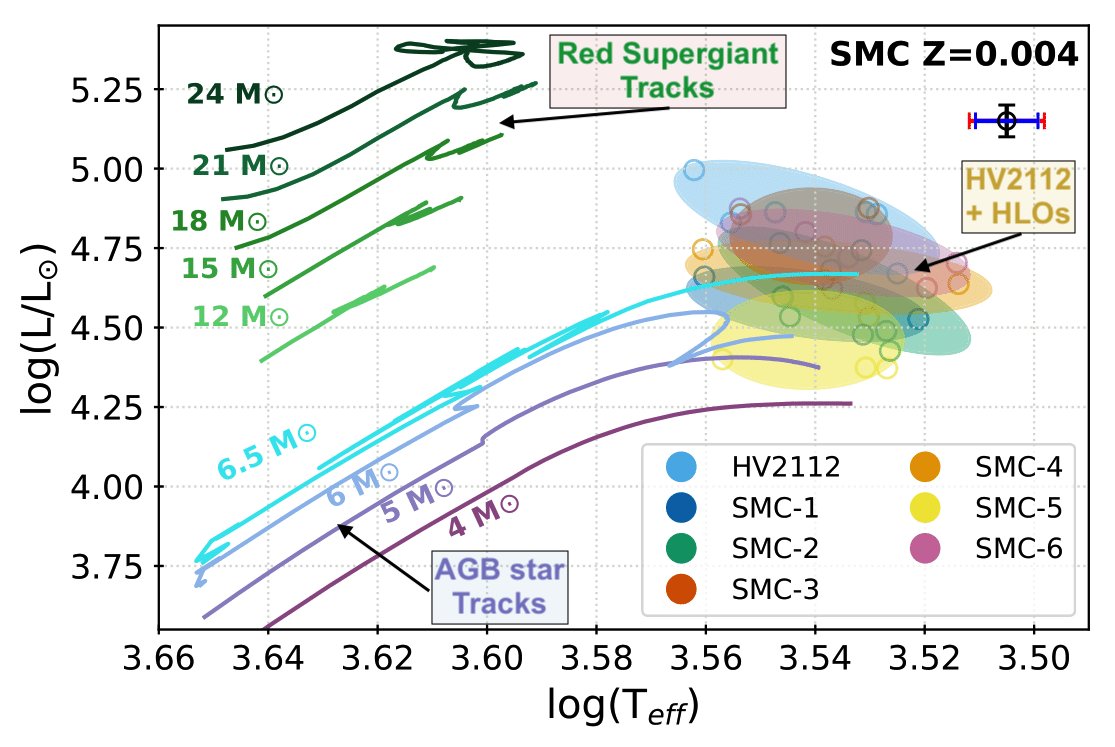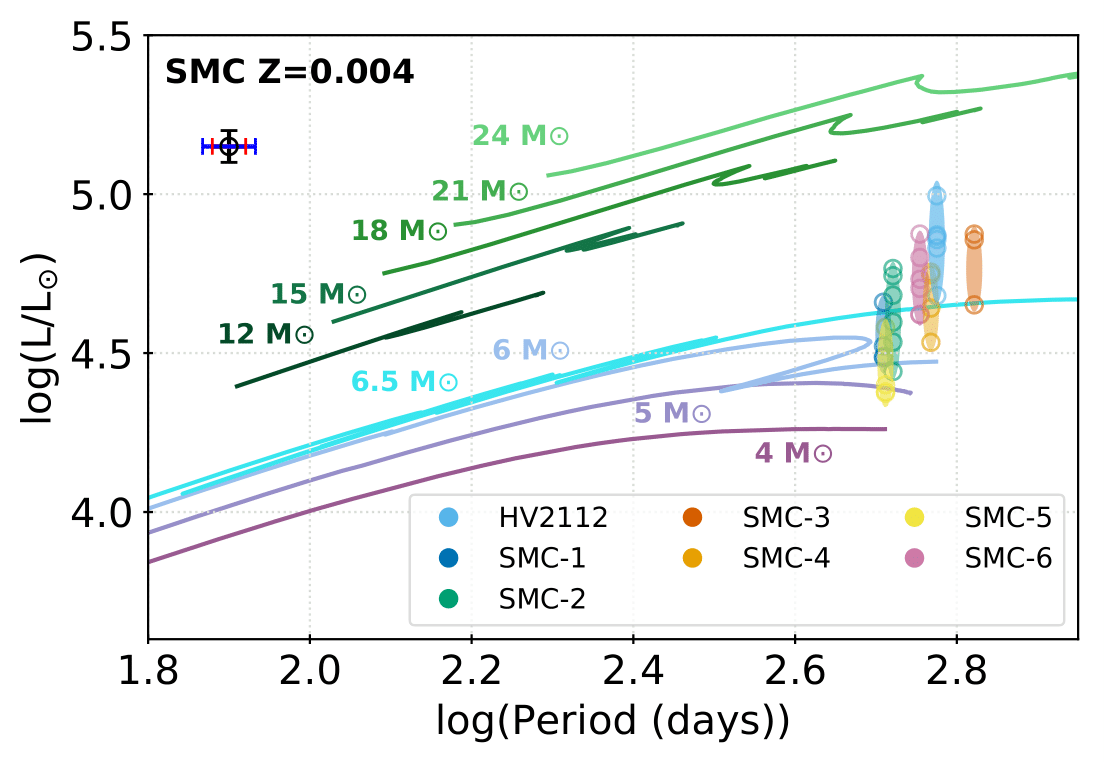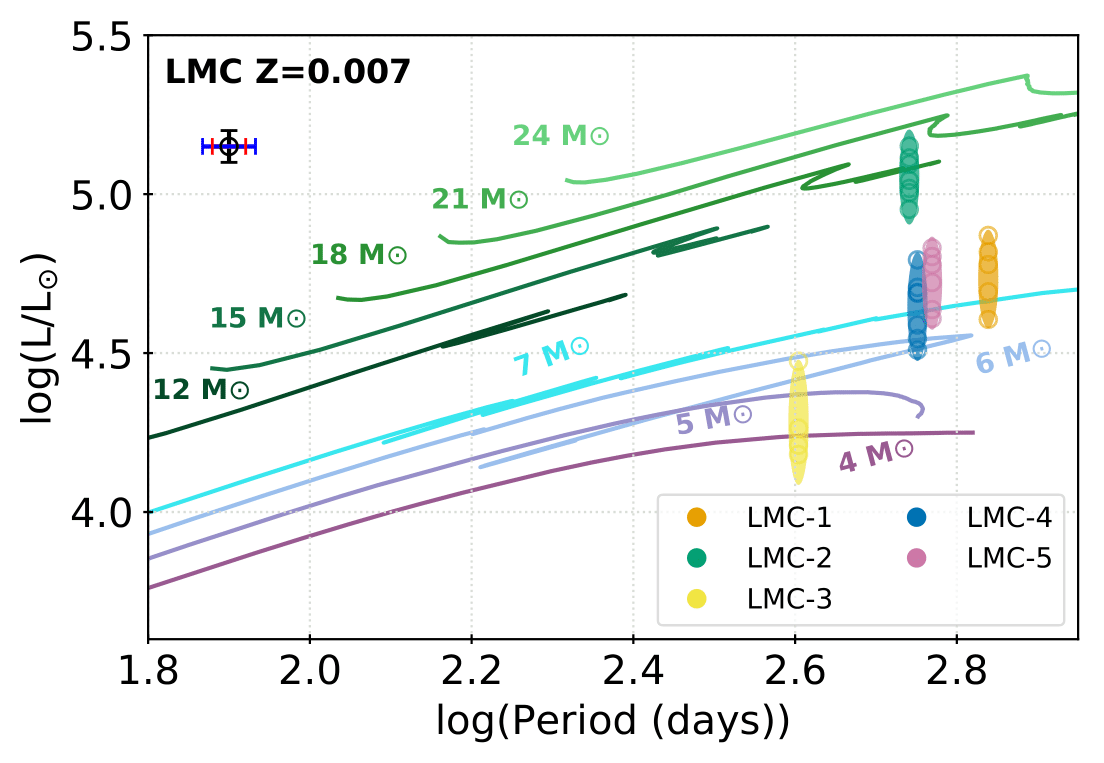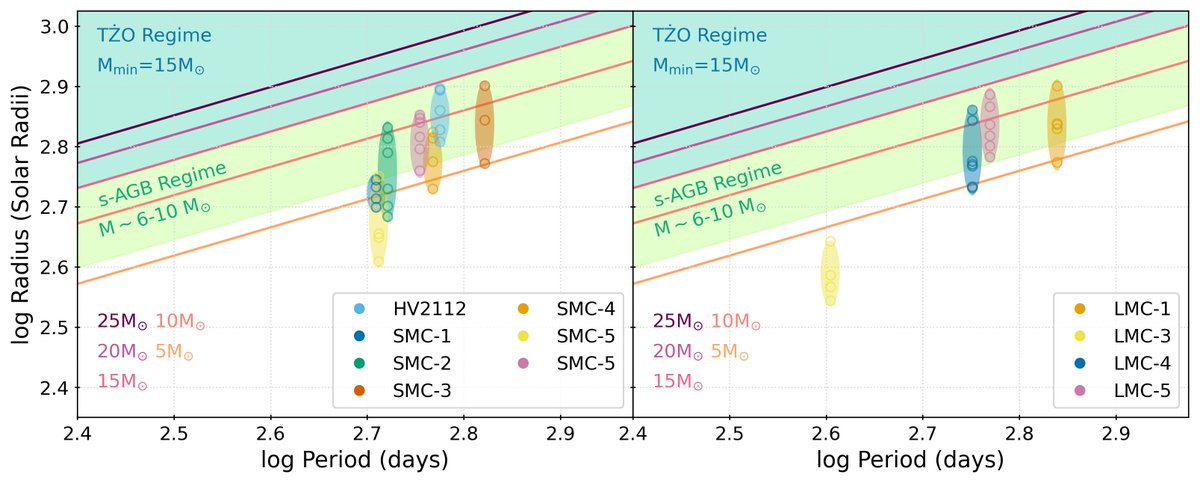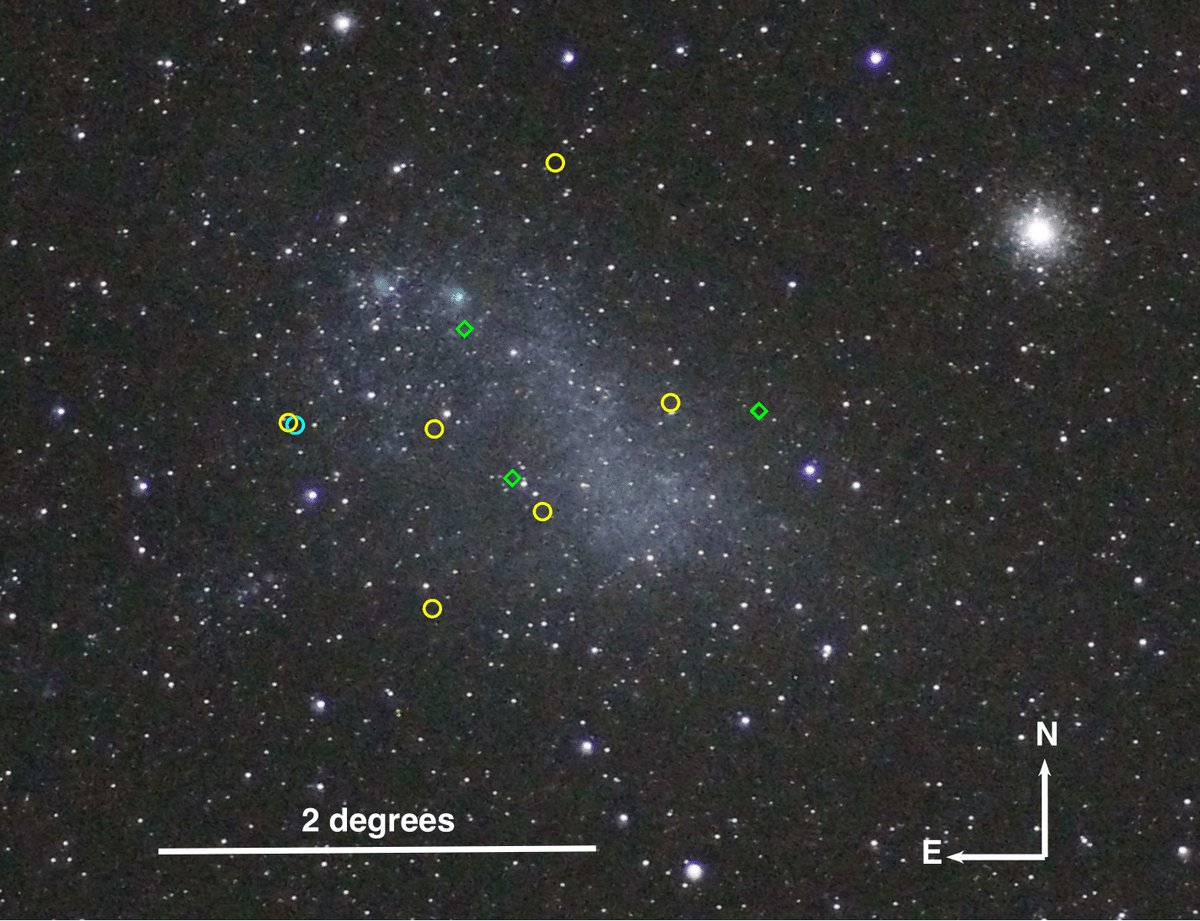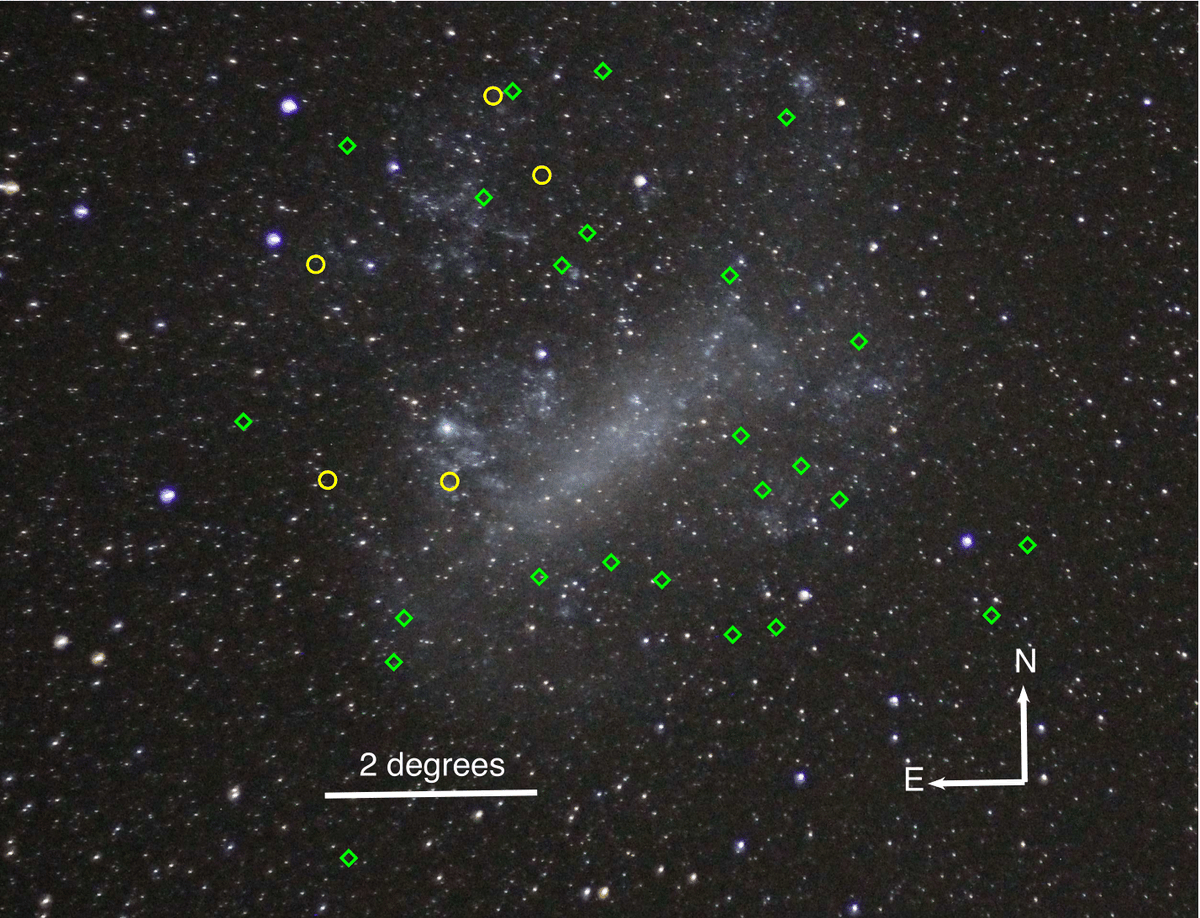My first 1st author paper came out today! I& #39;m very excited to share my and my collaborators& #39; work on the possible identification of a population of super-AGB stars in the Magellanic Clouds! https://arxiv.org/abs/2008.06563 ">https://arxiv.org/abs/2008.... Paper thread is below:
What are super-AGB (sAGB) stars? They are intermediate mass stars (~6-10 solar masses) that are in the transition area between low-mass and high-mass stellar evolution. Some sAGBs will leave behind a white dwarf, while others explode as supernovae.
This project actually didn’t begin as a search for sAGBs - but sometimes the science surprises you! The core goal of the project was to find stars similar to HV2112, a Small Magellanic Cloud star and has been identified ( @emsque) as a candidate Thorne-Żytkow Object.
TŻOs are red supergiants with neutron star cores, a rare outcome of binary evolution. The true nature of HV2112 is debated. One way to help uncover its true identity is to understand if HV2112 is unique, or if there is a population of stars with similar properties.
HV2112 shows strong photometric variability. This is the V-band light curve of HV2112; these data are from @SuperASASSN! This level of variability, particularly the high amplitude, is not characteristic of RSGs. It is more in line with variability seen in pulsating red giants.
Making use of the extremely high cadence data for the Clouds in ASAS-SN, we searched for other red & luminous stars with strong variability like HV2112. We found 38! 11 of those also had light curves with a similar shape as HV2112. Our further analyses focused on these 12 stars.
How do their photometric and variability properties compare to RSGs & AGBs? They seem to exist in their own unique space! Their variability properties are not at all consistent with RSGs, and they appear brighter than most pulsating AGB stars.
We were also able to constrain the physical properties (luminosity and temperature) of these stars, using data from both ASAS-SN and NEO-WISE. This allowed us to place the stars on a H-R diagram, alongside MESA models of RSGs (green) and AGB stars (blue/violet).
A similar result can be seen here with luminosity vs pulsation period. The stars (w/ one exception) appear to be the most consistent with AGB models with M > ~6 solar masses. That is within super-AGB territory!
But what about the TŻO hypothesis?
But what about the TŻO hypothesis?
TŻOs have a minimum mass of ~15 solar masses. If they fall below this, they would cease fusion and collapse. In this plot with lines of constant mass (w/ some structure assumptions), we see that the stars appear within the sAGB mass range, and below the TŻO requirement.
Along with additional analyses in the paper, we can paint a pretty clear picture of most of these stars being strong super-AGB star candidates. Previous to this, 1 sAGB candidate had been observed - this significantly increases the population! \\FIN
Science is always a collaborative effort. A huge thank you to my supervisors @mrdrout and @SciBry, and to my co-authors, including @BenShappee @evbauer_astro @j_tharindu @SuperASASSN @JosePrietoK @chargedcurrent, Chris Kochanek, Jim Fuller, & Tom Holoien.
Also thank you to @emsque @astrohatter @marthaboyer @spacetimekatie @danxhuber, John Percy, Marten van Kerkwijk & Dae-Sik Moon for helpful conversations, and Miranda Herman & @tylerjgdowney for helpful edits.
A fun bonus! Here are the locations of all these stars within the Magellanic Clouds! Blue=HV2112, Yellow=Similar light curve to HV2112, Green=Not similar. (Photos were taken by me at @LCOAstro, coordinates provided by http://astrometry.net"> http://astrometry.net )

 Read on Twitter
Read on Twitter